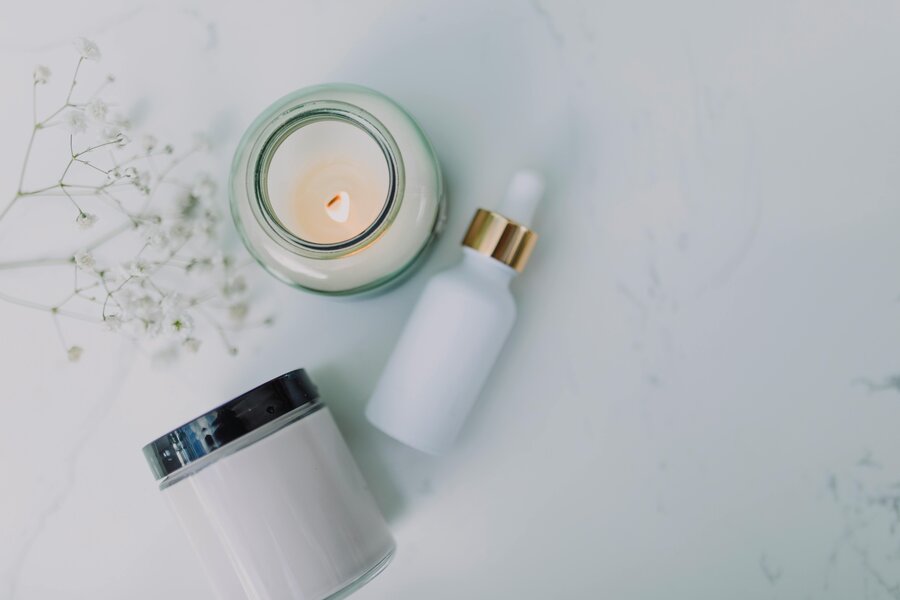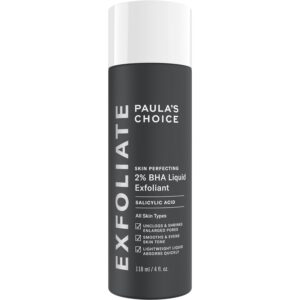Which Type of Toner is Best for Combination Skin? A Complete Guide to Achieving Balanced Skin
Finding the right skincare products can be challenging, especially if you have combination skin. This skin type presents both oily and dry areas, requiring carefully chosen products to balance these contrasting needs effectively. One essential product in any skincare routine is toner, which can help restore harmony in combination skin. In this guide, we will dive into which type of toner is best for combination skin, along with tips to incorporate it into your skincare regime for lasting, balanced radiance.
Understanding the Unique Challenges of Combination Skin
Combination skin is a blend of different skin types on one face. Here’s what you need to know:
- Oily Zones – The T-zone (forehead, nose, and chin) typically has more active oil glands, making these areas prone to shine and clogged pores.
- Dry Zones – The cheeks and areas around the eyes usually have fewer oil glands, making them more susceptible to dryness and flakiness.
The dual nature of combination skin makes it difficult to find products that won’t aggravate either the dry or oily areas. That’s why selecting the right toner, specifically formulated for combination skin, is a game-changer.
What is a Toner, and Why Does Combination Skin Need It?
A toner is a liquid-based skincare product used after cleansing and before moisturizing. Think of toner as a bridge between cleansing and the rest of your routine. The right toner for combination skin can:
- Remove Residual Impurities: It clears any leftover dirt, makeup, or cleanser residue, which is especially useful if your T-zone is oily or acne-prone.
- Balance pH Levels: Cleansing can disrupt your skin’s natural pH; toners restore it, making the skin more receptive to subsequent skincare products.
- Optimize Product Absorption: Toner preps the skin to absorb serums and moisturizers more effectively.
However, not all toners are created equal, especially for combination skin. The key is to select one with ingredients that target both hydration and oil control.
Paula's Choice SKIN BALANCING Pore-Reducing Face Toner for Combination and Oily Skin
Top Ingredients to Look For in a Toner for Combination Skin
Selecting a toner based on ingredients is essential for achieving harmony in combination skin. Here are the best options:
- Witch Hazel: A natural astringent that reduces oil without stripping moisture, witch hazel is ideal for minimizing excess shine in the T-zone.
- Rose Water: Known for its hydrating and soothing properties, rose water can calm and moisturize drier areas, such as the cheeks and under the eyes.
- Glycolic Acid: This alpha hydroxy acid (AHA) gently exfoliates the skin, removing dead skin cells that can clog pores or dull the complexion.
- Tea Tree Oil: Popular for its antibacterial properties, tea tree oil helps combat breakouts in oily areas without drying out the skin.
- Hyaluronic Acid: This humectant attracts water, adding hydration where needed—perfect for balancing the drier areas of combination skin.
Including these ingredients in your toner can help address the dual needs of combination skin: controlling oil in the T-zone while providing moisture to drier patches.
Types of Toners for Combination Skin: Finding the Right Formula
Now that you know the best ingredients, let’s explore the four main types of toners that work well with combination skin.
1. Hydrating Toners
Purpose: Hydrating toners provide moisture to the skin’s dry areas, especially useful if your cheeks or under-eye areas feel tight after cleansing.
Recommended Ingredients: Look for humectants like hyaluronic acid, glycerin, or aloe vera. These ingredients pull moisture into the skin without clogging pores or creating excess shine in oil-prone areas.
Best Use Case: Ideal for combination skin with a leaning towards dryness, especially during colder months when skin may need an extra hydration boost.
2. Astringent Toners
Purpose: Astringent toners are often used to control oil production in areas like the T-zone. They can help reduce the appearance of pores and prevent acne, but may dry out sensitive skin if overused.
Recommended Ingredients: Witch hazel and certain mild alcohols can provide oil control. However, avoid harsh alcohol-based astringents as they can exacerbate dryness.
Best Use Case: Astringent toners are helpful for combination skin that has very oily zones but should be used sparingly and not daily, to prevent over-drying.
3. Exfoliating Toners
Purpose: Exfoliating toners help remove dead skin cells and unclog pores, which is beneficial for areas with excessive oil or breakouts.
Recommended Ingredients: AHAs like glycolic acid and BHAs like salicylic acid work well in exfoliating toners. AHAs are generally more hydrating and work best on the surface, while BHAs can penetrate pores to combat blackheads and acne.
Best Use Case: For combination skin prone to breakouts, using an exfoliating toner two to three times a week can reduce oil build-up and improve texture.
4. Balancing Toners
Purpose: Specifically designed for combination skin, balancing toners contain ingredients to address both oil and dryness, making them an all-around suitable option.
Recommended Ingredients: Balancing toners often contain a mix of witch hazel, rose water, and mild humectants. Look for options that combine botanicals with gentle exfoliants.
Best Use Case: Balancing toners are ideal for daily use on combination skin, offering an even-keeled approach to both hydration and oil control.
Paula's Choice SKIN PERFECTING 2% BHA Liquid Salicylic Acid Exfoliant
Personalizing Your Toner Routine: Tips for Combination Skin
Adding a toner to your skincare routine is beneficial, but how you apply it matters too! Here’s a step-by-step guide:
- Cleanse with a Gentle, Balanced Cleanser: Start with a cleanser that is not too harsh, as you don’t want to strip natural oils from the skin. Look for sulfate-free cleansers that won’t leave dry patches feeling parched.
- Apply Toner on Cotton or Hands: Use a cotton pad or pat the toner gently onto your skin with clean hands, concentrating on the T-zone if using an astringent toner, or sweeping all over for a balancing or hydrating toner.
- Wait Before Applying Serum: Allow the toner to absorb fully for a few moments. This step ensures that your skin is prepped for the next products.
- Finish with Moisturizer: Lock in hydration with a lightweight, non-comedogenic moisturizer that won’t clog pores in the oily zones but provides enough moisture for the dry areas.
Mistakes to Avoid When Using Toner on Combination Skin
To maximize the benefits of toner, it’s also essential to avoid certain common mistakes:
- Overusing Astringent Toners: While these can help control oil, excessive use may dry out your skin, leading to an increase in oil production as your skin tries to compensate.
- Using Multiple Toners at Once: Some may think that using different toners on different areas of the face is beneficial, but this can often confuse the skin. Stick to one toner with balancing ingredients for an all-over application.
- Skipping Patch Tests: For sensitive areas, especially around the eyes or cheeks, always do a patch test with a new toner to ensure you don’t have an adverse reaction.
PCA SKIN Hydrating Toner for Face, Nutrient Face Toner for Sensitive Skin, Dry Skin, and Aging Skin
Recommended Toners for Combination Skin: Top Picks
Here are some well-reviewed toners for combination skin that balance oil control with hydration:
- Thayers Witch Hazel Toner with Aloe Vera: Alcohol-free, this toner is gentle enough for combination skin and contains soothing aloe.
- Paula's Choice Skin Perfecting 2% BHA Liquid Exfoliant: A well-known exfoliating toner that unclogs pores and reduces breakouts.
- Clinique Clarifying Lotion 2: A gentle exfoliating toner that balances oil and helps hydrate dry areas.
- Herbivore Botanicals Rose Hibiscus Hydrating Face Mist: Rose water and hyaluronic acid in this toner help hydrate and soothe the skin.
Frequently Asked Questions About Toner and Combination Skin
Q: How often should I use toner on combination skin?
Generally, once a day is sufficient, but some balancing toners can be used twice daily if tolerated by your skin.
Q: Can I use an exfoliating toner every day?
For combination skin, it’s best to use exfoliating toners 2-3 times per week. Daily use can lead to irritation and increased oil production.
Q: Should I apply toner on damp or dry skin?
It’s best to apply toner on slightly damp skin after cleansing to help lock in moisture.
Conclusion: Achieving Balanced, Radiant Skin with the Right Toner
Choosing the best toner for combination skin is all about understanding your skin’s unique needs and selecting products that address both oiliness and dryness without overcorrecting either condition. By incorporating a carefully chosen toner into your skincare routine, you can pave the way to a balanced, radiant complexion. Remember to patch-test any new product, and consult with a dermatologist if you’re uncertain about what ingredients will work best for your skin type.




